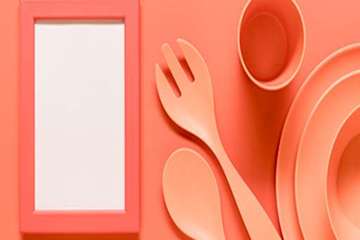Browse
Incorporating Technologies
Posted on: #iteachmsu


Posted by
over 1 year ago
“It’s clear that early emotional neglect has profound consequences for brain development that can affect the brain structure, connectivity and capacity, including impairments in focus and attention. Exposure to toxins, such as alcohol or nicotine, in utero increases the risk for ADHD in a dose-dependent fashion.” - Joshua Cabrera, MD, clinical psychiatrist and assistant professor at the Texas A&M College of Medicine.
Posted on: #iteachmsu

Combined type.
Combined type. The student may exhibit symptoms that include behaviors from both categories above.
In order for a student to be diagnosed with ADHD, symptoms must appear before age 12 and be exhibited across at least two settings. They must also have adverse effects on academic performance, occupational success, or social-emotional development (APA, 2013).
To add to the complexity of the diagnosis, children with ADHD are likely to have co-existing emotional, behavioral, developmental, learning, or physical conditions (Wolraich & DuPaul, 2010).
In order for a student to be diagnosed with ADHD, symptoms must appear before age 12 and be exhibited across at least two settings. They must also have adverse effects on academic performance, occupational success, or social-emotional development (APA, 2013).
To add to the complexity of the diagnosis, children with ADHD are likely to have co-existing emotional, behavioral, developmental, learning, or physical conditions (Wolraich & DuPaul, 2010).
Authored by:
Chathu

Posted on: #iteachmsu


Combined type.
Combined type. The student may exhibit symptoms that include behavi...
Authored by:
Tuesday, Jan 2, 2024
Posted on: #iteachmsu


Posted by
almost 2 years ago
Learning Games
This program is an online continuous course with no specific start or end date.
Creating a Culture of Collaboration and Interprofessional Teaming is an online self-paced course offering. This offering is made possible through the support of Venturit's internal WIzdn team.
Sfak
This program is an online continuous course with no specific start or end date.
Creating a Culture of Collaboration and Interprofessional Teaming is an online self-paced course offering. This offering is made possible through the support of Venturit's internal WIzdn team.
Sfak
Posted on: #iteachmsu



Posted by
almost 2 years ago

Stage 1: Planning and Requirement Analysis
Requirement analysis is the most important and fundamental stage in SDLC. It is performed by the senior members of the team with inputs from the customer, the sales department, market surveys and domain experts in the industry. This information is then used to plan the basic project approach and to conduct product feasibility study in the economical, operational and technical areas.
Planning for the quality assurance requirements and identification of the risks associated with the project is also done in the planning stage. The outcome of the technical feasibility study is to define the various technical approaches that can be followed to implement the project successfully with minimum risks.
Stage 2: Defining Requirements
Once the requirement analysis is done the next step is to clearly define and document the product requirements and get them approved from the customer or the market analysts. This is done through an SRS (Software Requirement Specification) document which consists of all the product requirements to be designed and developed during the project life cycle.
Stage 3: Designing the Product Architecture
SRS is the reference for product architects to come out with the best architecture for the product to be developed. Based on the requirements specified in SRS, usually more than one design approach for the product architecture is proposed and documented in a DDS - Design Document Specification.
This DDS is reviewed by all the important stakeholders and based on various parameters as risk assessment, product robustness, design modularity, budget and time constraints, the best design approach is selected for the product.
A design approach clearly defines all the architectural modules of the product along with its communication and data flow representation with the external and third party modules (if any). The internal design of all the modules of the proposed architecture should be clearly defined with the minutest of the details in DDS.
Stage 4: Building or Developing the Product
In this stage of SDLC the actual development starts and the product is built. The programming code is generated as per DDS during this stage. If the design is performed in a detailed and organized manner, code generation can be accomplished without much hassle.
Developers must follow the coding guidelines defined by their organization and programming tools like compilers, interpreters, debuggers, etc. are used to generate the code. Different high level programming languages such as C, C++, Pascal, Java and PHP are used for coding. The programming language is chosen with respect to the type of software being developed.
Stage 5: Testing the Product
This stage is usually a subset of all the stages as in the modern SDLC models, the testing activities are mostly involved in all the stages of SDLC. However, this stage refers to the testing only stage of the product where product defects are reported, tracked, fixed and retested, until the product reaches the quality standards defined in the SRS.
Stage 6: Deployment in the Market and Maintenance
Once the product is tested and ready to be deployed it is released formally in the appropriate market. Sometimes product deployment happens in stages as per the business strategy of that organization. The product may first be released in a limited segment and tested in the real business environment (UAT- User acceptance testing).
Then based on the feedback, the product may be released as it is or with suggested enhancements in the targeting market segment. After the product is released in the market, its maintenance is done for the existing customer base.
Requirement analysis is the most important and fundamental stage in SDLC. It is performed by the senior members of the team with inputs from the customer, the sales department, market surveys and domain experts in the industry. This information is then used to plan the basic project approach and to conduct product feasibility study in the economical, operational and technical areas.
Planning for the quality assurance requirements and identification of the risks associated with the project is also done in the planning stage. The outcome of the technical feasibility study is to define the various technical approaches that can be followed to implement the project successfully with minimum risks.
Stage 2: Defining Requirements
Once the requirement analysis is done the next step is to clearly define and document the product requirements and get them approved from the customer or the market analysts. This is done through an SRS (Software Requirement Specification) document which consists of all the product requirements to be designed and developed during the project life cycle.
Stage 3: Designing the Product Architecture
SRS is the reference for product architects to come out with the best architecture for the product to be developed. Based on the requirements specified in SRS, usually more than one design approach for the product architecture is proposed and documented in a DDS - Design Document Specification.
This DDS is reviewed by all the important stakeholders and based on various parameters as risk assessment, product robustness, design modularity, budget and time constraints, the best design approach is selected for the product.
A design approach clearly defines all the architectural modules of the product along with its communication and data flow representation with the external and third party modules (if any). The internal design of all the modules of the proposed architecture should be clearly defined with the minutest of the details in DDS.
Stage 4: Building or Developing the Product
In this stage of SDLC the actual development starts and the product is built. The programming code is generated as per DDS during this stage. If the design is performed in a detailed and organized manner, code generation can be accomplished without much hassle.
Developers must follow the coding guidelines defined by their organization and programming tools like compilers, interpreters, debuggers, etc. are used to generate the code. Different high level programming languages such as C, C++, Pascal, Java and PHP are used for coding. The programming language is chosen with respect to the type of software being developed.
Stage 5: Testing the Product
This stage is usually a subset of all the stages as in the modern SDLC models, the testing activities are mostly involved in all the stages of SDLC. However, this stage refers to the testing only stage of the product where product defects are reported, tracked, fixed and retested, until the product reaches the quality standards defined in the SRS.
Stage 6: Deployment in the Market and Maintenance
Once the product is tested and ready to be deployed it is released formally in the appropriate market. Sometimes product deployment happens in stages as per the business strategy of that organization. The product may first be released in a limited segment and tested in the real business environment (UAT- User acceptance testing).
Then based on the feedback, the product may be released as it is or with suggested enhancements in the targeting market segment. After the product is released in the market, its maintenance is done for the existing customer base.
Posted on: #iteachmsu

Tips to increase your protein intake edited
To include more high-quality protein in your diet, try replacing processed carbs with high-quality protein. It can reduce your risk for heart disease and stroke, and you'll also feel full longer, which can help you maintain a healthy weight.
Reduce the amount of processed carbohydrates you consume—from foods such as pastries, cakes, pizza, cookies and chips—and replace them with fish, beans, nuts, seeds, peas, chicken, low-fat dairy, and soy and tofu products.
Snack on nuts and seeds instead of chips, replace a baked dessert with Greek yogurt, or swap out slices of pizza for a grilled chicken breast and a side of beans.
Not a seafood fan? Make fish more palatable
If you're not a fan of seafood, but want to include more in your diet, there are ways to make fish more palatable.
Always buy fresh fish. Some say tilapia, cod, or salmon have the least “fishy” taste.
Disguise the taste by adding a flavorful sauce.
Marinate fish with Creole or Cajun seasoning.
Add shell fish or white fish, such as cod or tilapia, to a curry.
Combine grilled fish with fresh salsa or your favorite chutney
Mix canned salmon or tuna with low-fat mayonnaise and chopped onion for a tasty sandwich filling.
Reduce the amount of processed carbohydrates you consume—from foods such as pastries, cakes, pizza, cookies and chips—and replace them with fish, beans, nuts, seeds, peas, chicken, low-fat dairy, and soy and tofu products.
Snack on nuts and seeds instead of chips, replace a baked dessert with Greek yogurt, or swap out slices of pizza for a grilled chicken breast and a side of beans.
Not a seafood fan? Make fish more palatable
If you're not a fan of seafood, but want to include more in your diet, there are ways to make fish more palatable.
Always buy fresh fish. Some say tilapia, cod, or salmon have the least “fishy” taste.
Disguise the taste by adding a flavorful sauce.
Marinate fish with Creole or Cajun seasoning.
Add shell fish or white fish, such as cod or tilapia, to a curry.
Combine grilled fish with fresh salsa or your favorite chutney
Mix canned salmon or tuna with low-fat mayonnaise and chopped onion for a tasty sandwich filling.
Authored by:
Vijayalaxmi

Posted on: #iteachmsu


Tips to increase your protein intake edited
To include more high-quality protein in your diet, try replacing&nb...
Authored by:
Monday, Nov 27, 2023
Posted on: #iteachmsu

Too much protein can be harmful to people
While some extreme diets may suggest otherwise, we all need a balance of protein, fat, carbohydrates, fiber, vitamins, and minerals in our diets to sustain a healthy body. You don't need to eliminate certain categories of food from your diet, but rather select the healthiest options from each category.
Protein gives you the energy to get up and go—and keep going—while also supporting mood and cognitive function. Too much protein can be harmful to people with kidney disease, but the latest research suggests that many of us need more high-quality protein, especially as we age. That doesn't mean you have to eat more animal products—a variety of plant-based sources of protein each day can ensure your body gets all the essential protein it needs.
Protein gives you the energy to get up and go—and keep going—while also supporting mood and cognitive function. Too much protein can be harmful to people with kidney disease, but the latest research suggests that many of us need more high-quality protein, especially as we age. That doesn't mean you have to eat more animal products—a variety of plant-based sources of protein each day can ensure your body gets all the essential protein it needs.
Authored by:
Vijayalaxmi

Posted on: #iteachmsu


Too much protein can be harmful to people
While some extreme diets may suggest otherwise, we all need a balan...
Authored by:
Monday, Nov 27, 2023
Posted on: #iteachmsu

What is a healthy diet?
Eating a healthy diet is not about strict limitations, staying unrealistically thin, or depriving yourself of the foods you love. Rather, it’s about feeling great, having more energy, improving your health, and boosting your mood.
Healthy eating doesn’t have to be overly complicated. If you feel overwhelmed by all the conflicting nutrition and diet advice out there, you’re not alone. It seems that for every expert who tells you a certain food is good for you, you’ll find another saying exactly the opposite. The truth is that while some specific foods or nutrients have been shown to have a beneficial effect on mood, it’s your overall dietary pattern that is most important. The cornerstone of a healthy diet should be to replace processed food with real food whenever possible. Eating food that is as close as possible to the way nature made it can make a huge difference to the way you think, look, and feel.
By using these simple tips, you can cut through the confusion and learn how to create—and stick to—a tasty, varied, and nutritious diet that is as good for your mind as it is for your body.Table:
Sample 1
Sample 2
Sample 3
Sample 4
Sample 5
Sample 6
YT video URL: YT Embedded video link:URL: https://projects.invisionapp.com/d/main#/console/20294675/458743820/previewSpecial characters:♠¥φ®
Healthy eating doesn’t have to be overly complicated. If you feel overwhelmed by all the conflicting nutrition and diet advice out there, you’re not alone. It seems that for every expert who tells you a certain food is good for you, you’ll find another saying exactly the opposite. The truth is that while some specific foods or nutrients have been shown to have a beneficial effect on mood, it’s your overall dietary pattern that is most important. The cornerstone of a healthy diet should be to replace processed food with real food whenever possible. Eating food that is as close as possible to the way nature made it can make a huge difference to the way you think, look, and feel.
By using these simple tips, you can cut through the confusion and learn how to create—and stick to—a tasty, varied, and nutritious diet that is as good for your mind as it is for your body.Table:
Sample 1
Sample 2
Sample 3
Sample 4
Sample 5
Sample 6
YT video URL: YT Embedded video link:URL: https://projects.invisionapp.com/d/main#/console/20294675/458743820/previewSpecial characters:♠¥φ®
Authored by:
Vijayalaxmi mali

Posted on: #iteachmsu


What is a healthy diet?
Eating a healthy diet is not about strict limitations, staying unre...
Authored by:
Monday, Nov 27, 2023
Posted on: #iteachmsu

A warm welcome on Think One Week!
A warm welcome on Think One Week!
Did you ever take some time to tink about the big life questions?…Like
What are my goals in life? And have I been able to reach them yet?
How valuable is my life? Am I really loved by someone?
Is life making sense anyway? Does my life matter?
How will my future look like?
And what happens after death?
These are not the easiest questions to answer… Today you are challenged to think about your life and your future for one week. An investment that will be worth it if you give it a chance!
Think One Week offers you a 7-day programme to learn meaningful insights about your life and future. It’s all for free! This program was written in our spare time. We would like to share the valuable insights we have discovered.
Did you ever take some time to tink about the big life questions?…Like
What are my goals in life? And have I been able to reach them yet?
How valuable is my life? Am I really loved by someone?
Is life making sense anyway? Does my life matter?
How will my future look like?
And what happens after death?
These are not the easiest questions to answer… Today you are challenged to think about your life and your future for one week. An investment that will be worth it if you give it a chance!
Think One Week offers you a 7-day programme to learn meaningful insights about your life and future. It’s all for free! This program was written in our spare time. We would like to share the valuable insights we have discovered.
Authored by:
Vijayalaxmi

Posted on: #iteachmsu


A warm welcome on Think One Week!
A warm welcome on Think One Week!
Did you ever take some time to ti...
Did you ever take some time to ti...
Authored by:
Monday, Nov 27, 2023
